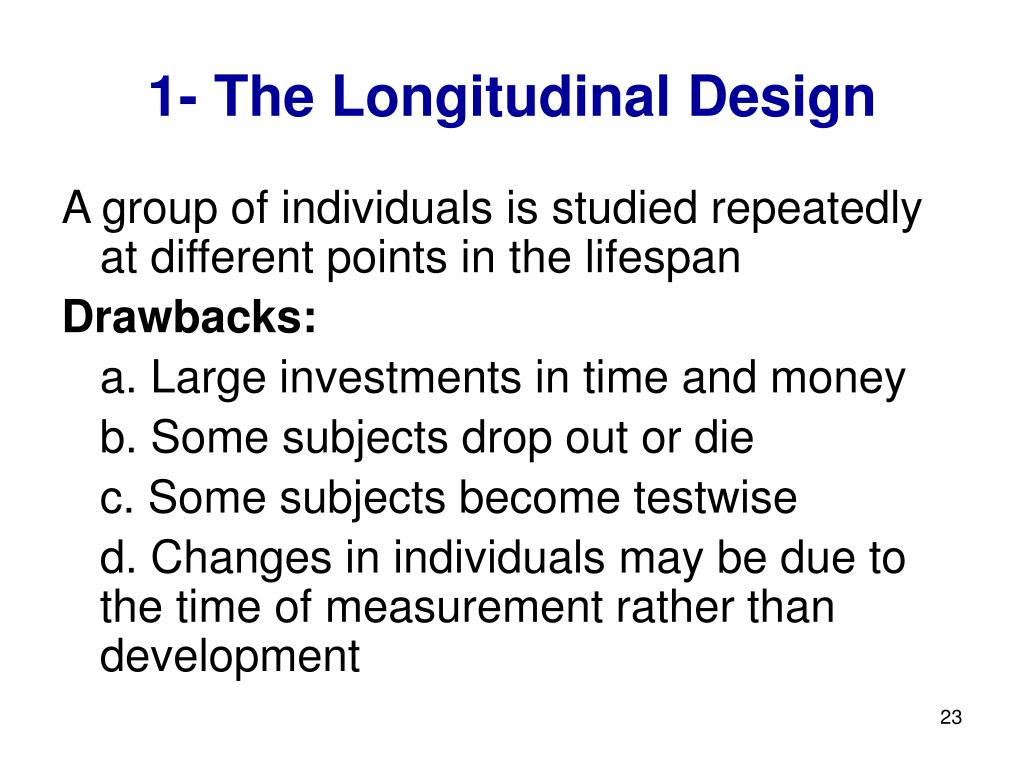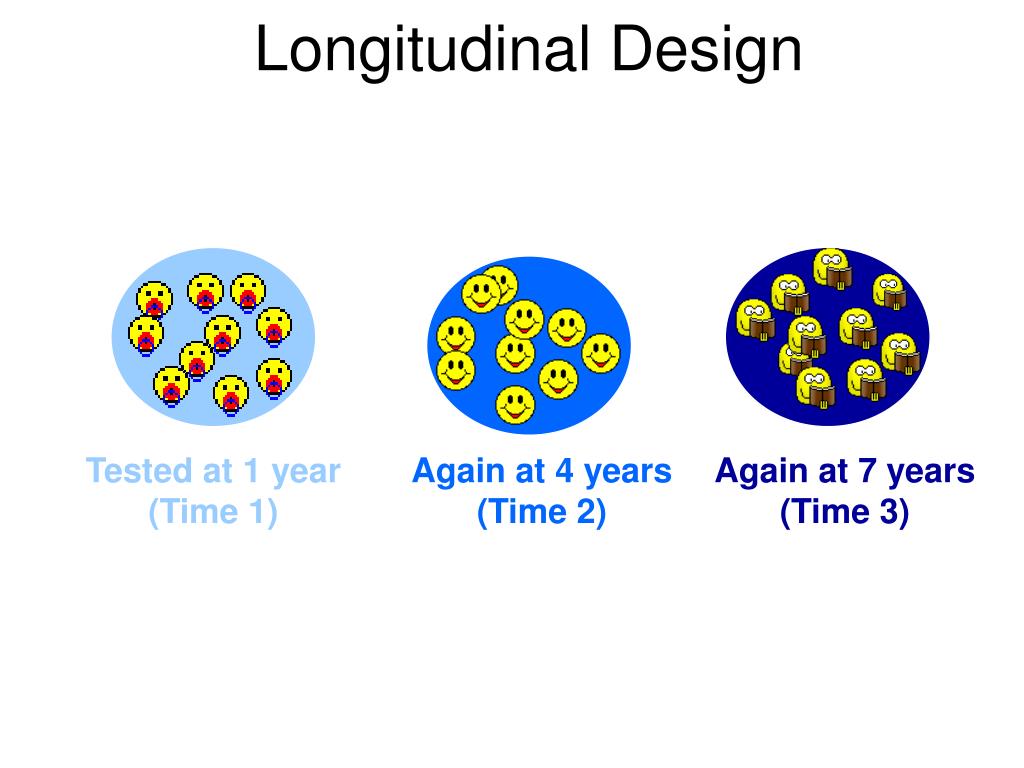Table Of Content

Without the cross-sectional study first, you would not have known to focus on men in particular. Both groups would then be observed over time to see if there are differences in outcomes, which could suggest an effect of the treatment or intervention. Case-control studies compare groups retrospectively and cannot be used to calculate relative risk. Longitudinal studies, though, can compare groups either retrospectively or prospectively. Detecting cohort effects is important but can be challenging as they are confounded with age and time of measurement effects. Techniques like maximum likelihood estimation and multiple imputation are better alternatives to older methods like listwise deletion.
Missing data
During this time, the researcher can compare video game-playing behaviors with violent tendencies. Thus, investigating whether there is a link between violence and video games. Over many years, researchers can see both sets of twins as they experience life without intervention.
Characteristics of Longitudinal Studies
Let’s assume, for example, that you conduct an employee engagement survey every year. If your organization has done these surveys for the past 10 years, you now have more than enough material to conduct a retrospective study. You can then find out how employee engagement at your company has varied over time. A retrospective longitudinal study is when you take pre-existing data from previous online surveys and other research. The objective here is to put your results in a larger timeline and observe the variation in results over time.

Survey Themes
Retrospective studies are generally less expensive and take less time than prospective studies, but they are more prone to measurement error. For example, familiarity with test items and procedures may allow participants to improve their scores over repeated testing above and beyond any true change. Cohort effects can also interfere with estimating other effects like retest effects. This happens because comparing groups to estimate retest effects relies on cohort equivalence. It is important to minimize attrition by tracking participants, keeping contact info up to date, engaging them, and providing incentives over time. This tendency is known as selective attrition and can threaten the validity of an experiment.
Cyber security longitudinal study - wave two - GOV.UK
Cyber security longitudinal study - wave two.
Posted: Mon, 19 Dec 2022 08:00:00 GMT [source]
Collecting your own data
There are several actions that could trigger this block including submitting a certain word or phrase, a SQL command or malformed data. Retest effects refer to gains in performance that occur when the same or similar test is administered on multiple occasions. Saul Mcleod, PhD., is a qualified psychology teacher with over 18 years of experience in further and higher education. He has been published in peer-reviewed journals, including the Journal of Clinical Psychology.
Participants tend to drop out
All effort should be made to ensure maximal retention of participants; with exit interviews offering useful insight as to the reason for uncontrolled departures (3). Due to the length of the research process, some variables might be unable to complete the study for one reason or the other. Then, he conducts a baseline survey to establish the premise of the research for later comparison.
The Canadian Healthy Infant Longitudinal Development (CHILD) birth cohort study: assessment of environmental ... - Nature.com
The Canadian Healthy Infant Longitudinal Development (CHILD) birth cohort study: assessment of environmental ....
Posted: Wed, 25 Mar 2015 07:00:00 GMT [source]
Many medical studies are longitudinal; researchers note and collect data from the same subjects over what can be many years. Longitudinal methods may provide a more comprehensive approach to research, that allows an understanding of the degree and direction of change over time. Longitudinal data collection is the process of gathering information from the same sample population over a long period. Longitudinal data collection uses interviews, surveys, and observation to collect the required information from research sources.
A longitudinal study follows what happens to selected variables over an extended time. Psychologists use the longitudinal study design to explore possible relationships among variables in the same group of individuals over an extended period. Started in 2006, Growing Up In Ireland is a longitudinal study conducted by the Irish government to understand what children’s life looks like in different age brackets. The long-term study can yield interesting results by following a set of children throughout their childhood.
Unlike longitudinal studies, where the research variables can change during a study, a cross-sectional study observes a single instance with all variables remaining the same throughout the study. A longitudinal study may follow up on a cross-sectional study to investigate the relationship between the variables more thoroughly. Numerous variables are to be considered, and adequately controlled, when embarking on such a project. Additionally, the engagement and commitment of organisations contributing to the project is essential; and should be maintained and facilitated by means of regular training, communication and inclusion as possible. Conducting longitudinal research is demanding in that it requires an appropriate infrastructure that is sufficiently robust to withstand the test of time, for the actual duration of the study.
You can go in without really knowing what you’re trying to find and what that might lead to. You can then use the surprises along the way to generate actionable insights. With this feature, you can share periodic surveys at any frequency that you set.
Advanced longitudinal methods such as cross-lagged panel modeling and growth curve modeling are reviewed. Finally, the advantages and disadvantages of conducting longitudinal research are outlined. Once researchers have determined the study's scope, participants, and procedures, most longitudinal studies begin with baseline data collection.
He used the data to spot trends over the years and understand his colonies' health and economic viability. A longitudinal study is a study that observes a subject or subjects over an extended period of time. When talking about what is a longitudinal study, we cannot go without also discussing the types of longitudinal research design.














